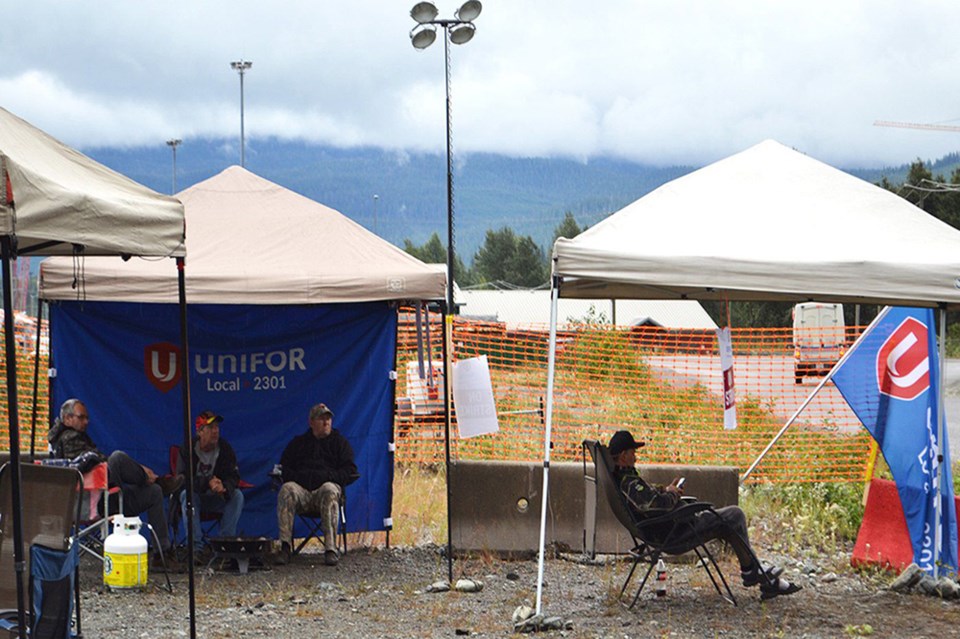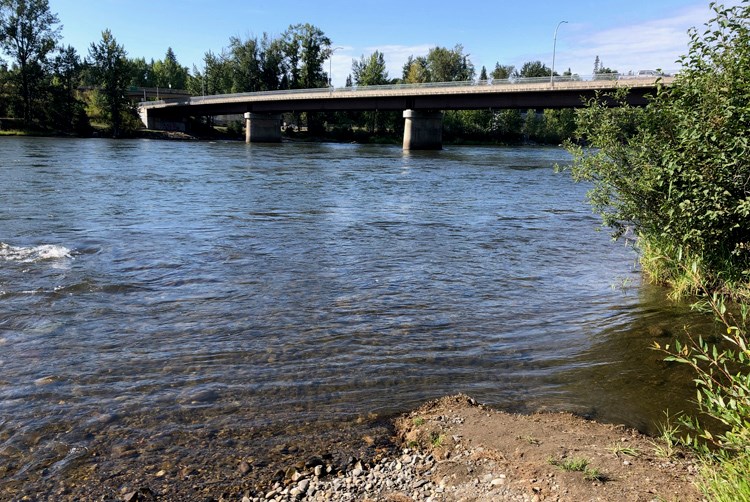BC
Rio Tinto, union to meet THIS week as Kitimat aluminum smelter strike enters fourth week

As the Kitimat aluminium smelter strike enters its fourth week, Rio Tinto and the union will hold another meeting in Vancouver next week to see if negotiations about a collective agreement can be renewed.
On Aug. 12, a similar meeting was held in Kitimat between top officials from Rio Tinto’s Montreal headquarters and Unifor Local 2301’s president to see if negotiations could resume between both parties in hopes of ending the stroke at the aluminum smelter which began in July 25.
However, no updates were provided by Rio Tinto or Unifor as to what happened during the Aug. 12, meeting and if both parties would head back to the table.
Information about next week’s meeting was sent out to Rio Tinto employees through a company memo on Aug. 17.
“After the meeting held on August 12 and follow up conversations, Rio Tinto and Unifor Local 2301 have agreed to meet early next week in Vancouver with a view to assess the potential restart of negotiations between parties,” said Rio Tinto in the memo.
While the meeting will not involve negotiations, it does give both sides another opportunity to discuss a framework for moving forward.
The memo also states that both parties have agreed that no other communication would be made until next week’s discussion takes place.
The strike began in Kitimat on July 25 after seven weeks of failed bargaining efforts between Unifor and Rio Tinto on matters of employee benefits and use of contractors among other issues.
No details have been provided as to what’s involved in contract talks save for the union which published information stating the company was proposing a series of benefits reductions.
Rio Tinto has denied that allegation but has not provided details on what it did propose, stating the contents of the negotiations to be confidential.
Local governments and leaders, including the District of Kitimat, City of Terrace, Haisla Nation, Skeena BC Liberal MLA Ellis Ross and NDP MP Taylor Bachrach called on Rio Tinto and Unifor Local 2301 to resume talks amidst fear of economic disruptions in northwest B.C.
Rio Tinto strike not impacting Nechako River levels

Water flow on the Nechako River is more than 30 per cent above average for this time of year, but the cause has more to do with snow than aluminum, according to a local expert.
Rio Tinto operates the Nechako Reservoir to provide water to its hydro-electric power facility at Kemano. The Kemano generating station powers the company’s Kitimat aluminum smelter, which is running at 25 per cent capacity due to a four-week-long strike by workers. Water from the reservoir flows to generate power at Kemano, and into the Nechako River via the Skins Lake Spillway and the Cheslatta River.
Wayne Salewski, president of the Vanderhoof-based Nechako Environment and Water Stewardship Society, said he hasn’t seen any changes in Rio Tinto’s operation of the Skins Lake Spillway since the start of the strike by Unifor members in Kitimat.
“(The Nechako) is a little high. The river was really full,” Salewski said. “One of the reasons is the snowpack on the mountains… was above average by quite a bit. That resulted in a tremendous amount of inflow into the reservoir.”
Levels on the Nechako Reservoir went from being below-average last year to essentially full-capacity by this summer, he said.
According to data reported online by Rio Tinto the Nechako Reservoir level peaked at just above 2,799 feet in mid-July, roughly two feet above typical reservoir levels. As of Thursday, the reservoir had dropped to 2,796.84 feet – roughly half a foot above typical levels.
Salewski said he’s spent more than 100 hours on the river this summer, and seen “just a nice, continuous flow through” the Skins Lake Spillway.
Water flow on the Nechako at Vanderhoof on Thursday was measured at 318.78 cubic metres per second – 31 per cent above the seasonal average of 243 cubic metres per second. Water discharge from the Skins Lake Spillway was more than 105 cubic metres per second above the summer minimum level of 170 cubic metres per second.
Rio Tinto is continuing to run the Kemano power station and is selling the surplus power to the BC Hydro grid, Salewski said. A spokesperson for Rio Tinto confirmed that.
“The demand for electricity this summer was extraordinary, with the heat,” Salewski said.
Operation of the Kemano power station has been deemed an essential service the BC Labour Relations Board, allowing it to continue operations during the strike.
“Our top priority in the watershed is to continue managing the Kemano hydro-power facility and the Nechako Reservoir safely, to protect the environment and the diverse interests of our host communities,” a Rio Tinto spokesperson said in an email.
Power demand at the Kitimat smelter is only one factor in making river flow decision, and regular adjustments are made based on current and projected weather.
Negotiations between Rio Tinto and Uniform Local 2301 are expected to resume in Vancouver next week, according to a company memo issued to employees on Tuesday. The strike began on July 25, after seven weeks of failed bargaining efforts regarding issues of employee benefits and the use of contractors, along with other issues.
- With files from Binny Pau, Local Journalism Initiative Reporter/Terrace Standard
No comments:
Post a Comment